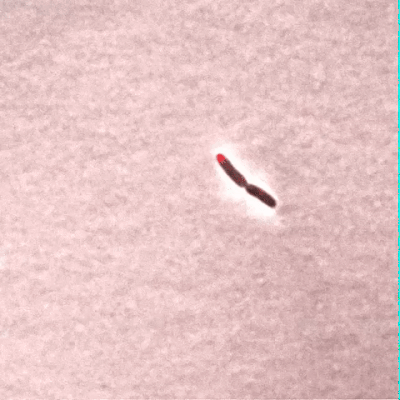Once again, welcome back. As many of you have read on the structure of Mycobacterium Tuberculosis, we are going to jump into their life cycle.
The cell division process of this bacterium is usually controlled because of its dormancy period. A chemostat culture is a method in which the growth rate can be controlled. This allows the experimenter to vary the growth rate while maintaining their cells a chemical or physical environment. An individual can have the bacteria in their system for a decade before it becomes an active M.Tuberculosis. The cell wall has complex parts and systems requiring specialized mechanisms for cell division to occur. The growth rate is slow which has a doubling time of 16 hours in laboratory conditions and varies in a human depending on the site and stage of infection. They are characterized by two phases, an acute and a persistent phase. In a persistent phase, the bacteria are slow-growing or not growing at all. In an acute phase, the bacteria is constantly growing.

This bacteria also has the ability to rearrange its metabolism based on the current environment it is placed in. Phagosomes are in the phagocytic systems, which have the ability to go into the site of generation of the reactive oxygen intermediates and increase anti-microbial peptides. The problem is that its antimicrobial peptides start to become low due to it not being able to catch up with the bacteria generation time, which has a greater chance for the bacteria to replicate and/or survive.
https://sites.google.com/site/mycobacteriumtbstudy/home/life-cycle-of-organism
Video: https://youtu.be/9112brXCOVc
Sources:
Beste DJV, Espasa M, Bonde B, Kierzek AM, Stewart GR, McFadden J (2009) The Genetic Requirements for Fast and Slow Growth in Mycobacteria. PLoS ONE 4(4): e5349. https://doi.org/10.1371/journal.pone.0005349
Russell, D. G., VanderVen, B. C., Lee, W., Abramovitch, R. B., Kim, M. J., Homolka, S., … Rohde, K. H. (2010). Mycobacterium tuberculosis wears what it eats. Cell host & microbe, 8(1), 68–76. doi:10.1016/j.chom.2010.06.002


I find it interesting how long the incubation period for this microbe is. I wonder how long it can incubate at the latest since it is common for it to not be activated for more then 10 years.